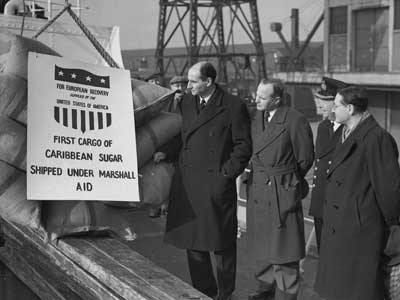This one’s also a bit different in that it wasn’t a bailout of a private company or financial market, but instead a bailout of Western Europe. The continent had been devastated by World War II and amid fears that the rebuilding countries could fall prey to instability or Communist takeover, U.S. Secretary of State George Marshall proposed a program that would end up putting $12 billion (about $120 billion of today’s dollars) toward a massive reconstruction of Europe’s industrial base and overall economy.
Spooked by the communist coup in Czechoslovakia, Congress ended months of debate and passed the Economic Cooperation Act of 1948, launching the Marshall Plan and serving as a template for future foreign aid by the United States. The program would sharpen the divide between East and West, leading the Soviet Union to tighten its control on the Eastern European countries it occupied at the end of the war as Western Europe rebuilt with American assistance. By the way, the Economic Cooperation Administration that oversaw the Marshall Plan would lay the groundwork for today’s European Union (which is dealing with its own bailout woes).
